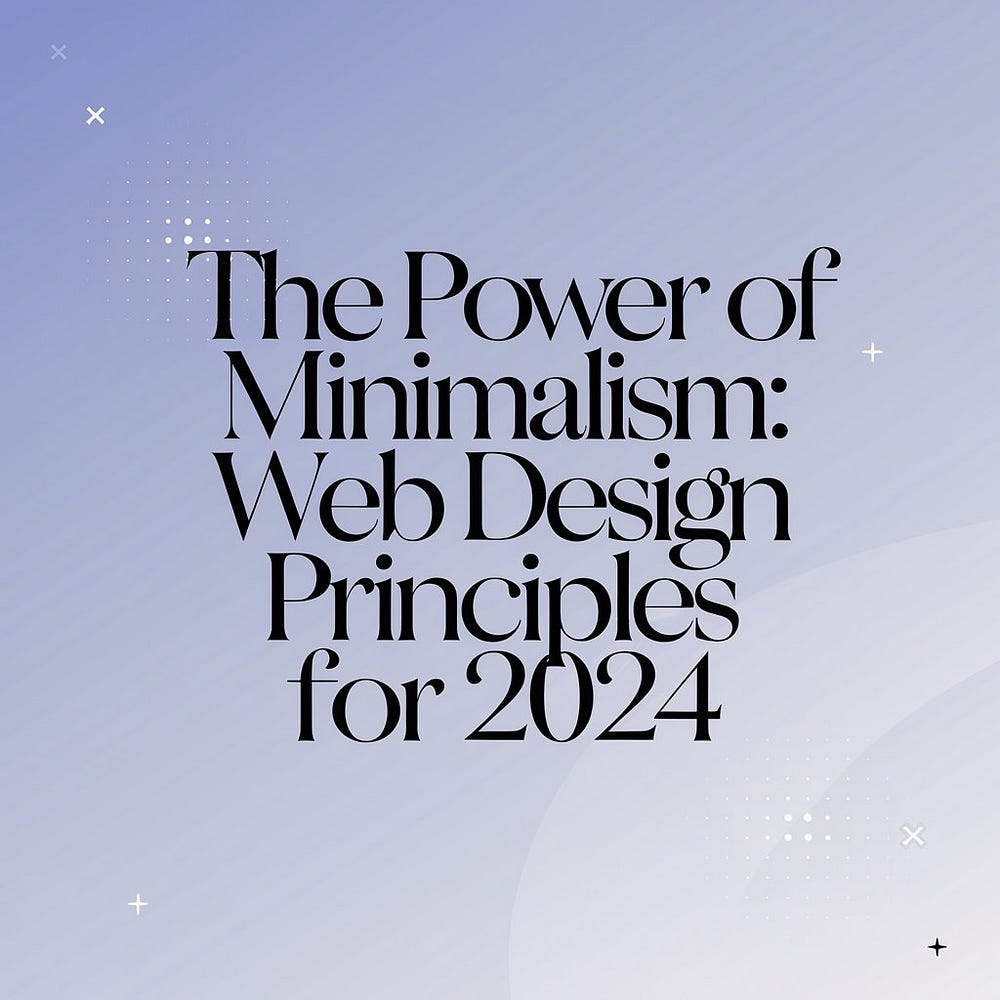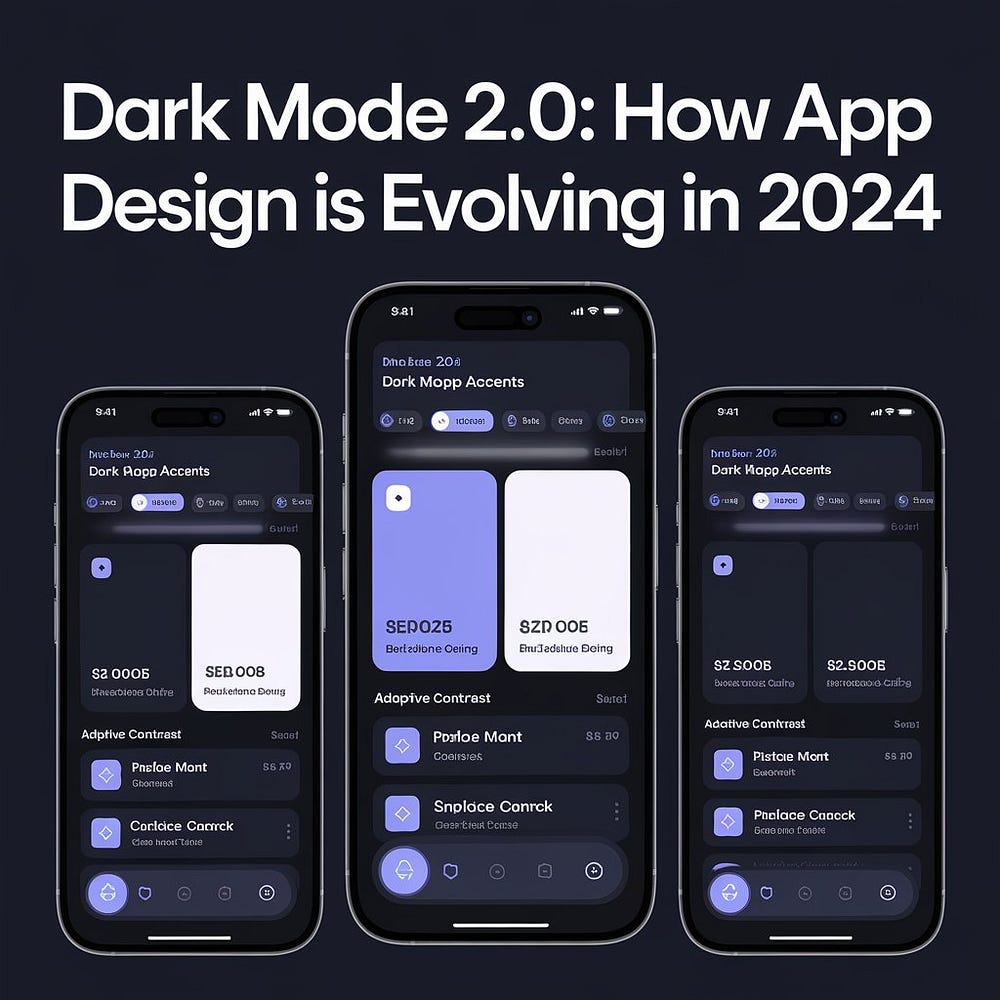The mobile app industry is evolving rapidly, with new design trends emerging every year. As we move...
The Power of Minimalism: Web Design Principles for 2024
As we step into 2024, minimalism remains a dominant force in web design, captivating users with its elegance, simplicity, and functionality. In an age where users are bombarded with information, minimalist web design offers a refreshing and effective approach by eliminating clutter and emphasizing only the essentials. This blog explores the power of minimalism in web design and why embracing this trend can lead to better user experiences, faster loading times, and improved engagement.

1. The Essence of Minimalism in Web Design
Minimalism in web design focuses on stripping away unnecessary elements, using clean lines, simple color schemes, and ample white space to guide users toward the desired actions. By concentrating on what truly matters, minimalist designs can deliver a seamless and efficient user experience. This approach aligns well with current user preferences, where functionality and ease of navigation are paramount.
Minimalism doesn’t mean boring; rather, it brings sophistication and clarity, allowing each design element to have its own space and significance. Websites that embrace minimalism often look modern, professional, and engaging, making them appealing to a wide audience.”
2. Benefits of Minimalism: Speed, Clarity, and Engagement
Minimalist websites are not just visually pleasing — they are also highly functional. By reducing the number of elements and optimizing the design, minimalist websites tend to load faster and perform better across devices. In 2024, users expect swift loading times and seamless browsing experiences, making minimalism an ideal approach.
Additionally, minimalist designs help in reducing cognitive load, which means users can focus on the content and actions that matter most. This results in better engagement and higher conversion rates as users are less likely to be distracted by superfluous elements. When used correctly, minimalism can also lead to better SEO performance, as search engines favor websites with clean code and fast loading times.
3. Key Principles of Minimalist Web Design
To achieve a truly minimalist design, there are several key principles that designers should follow:
- Use of White Space: White space, or negative space, is a crucial element in minimalism. It allows other design elements to stand out and guides the user’s focus to the most important parts of the page.
- Limited Color Palette: A simple color scheme not only enhances aesthetic appeal but also reinforces brand identity. Minimalist designs often rely on neutral tones with one or two accent colors to create a cohesive look.
- Focus on Typography: In minimalism, typography becomes a design element. Clean, sans-serif fonts are often used to improve readability and maintain simplicity.
- Simplicity in Navigation: Navigation should be intuitive and streamlined. Minimalist designs often feature hidden menus or single-level navigation to reduce clutter and enhance user experience.
4. Minimalism and Mobile Optimization
In 2024, mobile-first design is no longer optional — it’s essential. Minimalist web design naturally complements mobile optimization by prioritizing simplicity and efficiency. On mobile devices, users prefer straightforward layouts and quick access to information. Minimalism eliminates distractions, making it easier for mobile users to navigate and engage with content.
Designers can utilize responsive grids and scalable elements to ensure a consistent user experience across devices. By maintaining a minimalist approach, businesses can offer fast-loading, user-friendly websites that adapt seamlessly to different screen sizes.
5. The Future of Minimalism: Trends to Watch
Minimalism is here to stay, but like any trend, it continues to evolve. In 2024, some emerging minimalist trends include:
- Micro-animations: Subtle animations, like hover effects or loading icons, can add a touch of interactivity to minimalist designs without overwhelming the user.
- Dark Mode: Many users now prefer dark mode, which pairs well with minimalism by reducing eye strain and conserving device battery life.
- Asymmetry and Broken Grid Layouts: These elements break the traditional structure while maintaining a clean aesthetic, allowing for more creative expression within minimalist design.
- Minimalistic Video Content: Short, looped video backgrounds or subtle motion graphics can add depth to a minimalist website without cluttering the design.
Conclusion
Minimalism continues to dominate the web design world in 2024, offering a timeless and effective way to engage users. By focusing on essential elements and optimizing for speed and usability, minimalist websites provide an enjoyable browsing experience that stands out in a crowded digital landscape. As web design trends evolve, minimalism adapts, incorporating new techniques like micro-animations and dark mode to stay relevant. Embrace the power of minimalism to create websites that are not only beautiful but also functional and user-centric.

